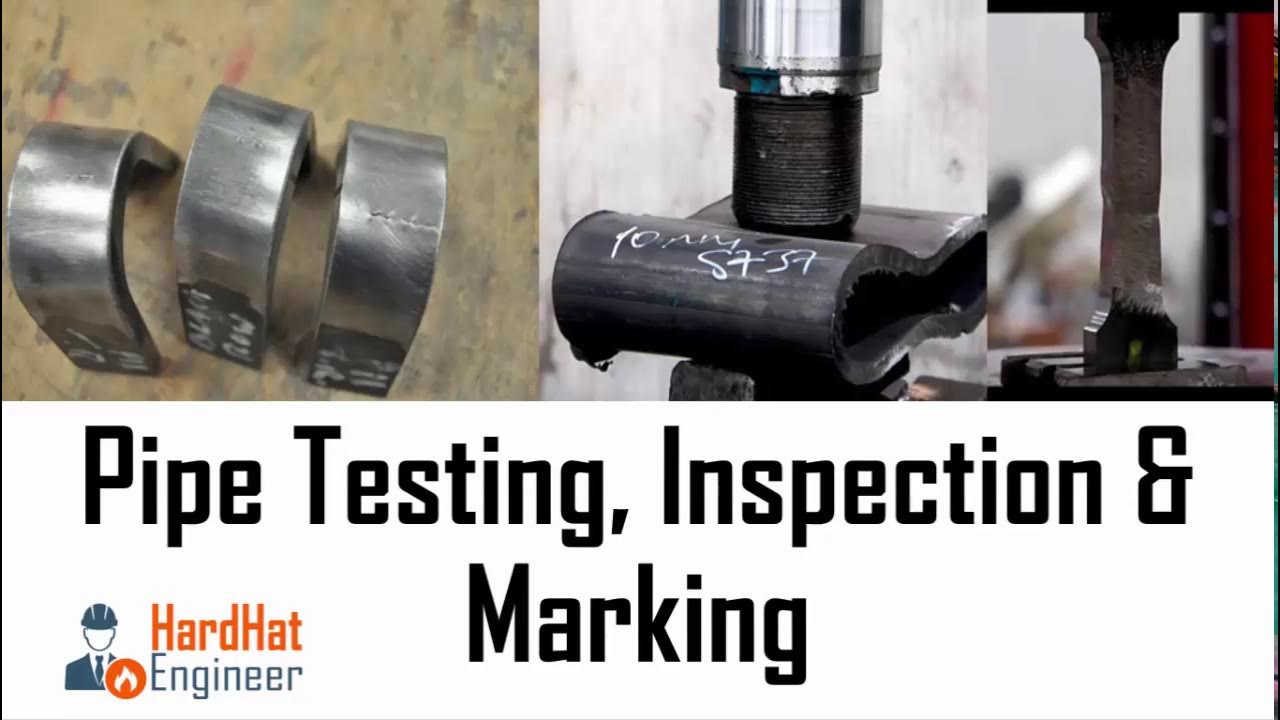Macam-macam NDT (Non Destructive Test)
Summary
TLDRThis video explores various non-destructive testing (NDT) methods used to evaluate materials without causing damage. It covers techniques such as Visual Inspection, Dye Penetrant Testing, Magnetic Particle Testing, Eddy Current Testing, Ultrasonic Testing, and Radiographic Testing. Each method is explained in detail, focusing on their principles, advantages, and limitations. From simple visual checks to advanced radiographic imaging, these methods help detect surface and internal defects, ensuring material integrity in various industries. The video provides a comprehensive guide to understanding how these essential techniques work in practice.
Takeaways
- 😀 Visual Inspection is a basic, non-destructive testing (NDT) method that uses simple tools like magnifying glasses to detect surface defects such as poor welds.
- 😀 Dye Penetrant Testing (DPT) is a widely used NDT technique where liquid penetrant is applied to a material's surface to reveal cracks or defects.
- 😀 DPT is effective for detecting surface defects but requires smooth, non-porous surfaces for optimal results.
- 😀 Magnetic Particle Testing (MPT) uses a magnetic field to reveal surface and near-surface defects in ferromagnetic materials.
- 😀 Eddy Current Testing (ECT) utilizes alternating current to detect surface and subsurface defects in conductive materials, particularly metals.
- 😀 Ultrasonic Testing (UT) employs high-frequency sound waves to detect both internal and surface defects in materials, offering precise measurements of defect size and location.
- 😀 Radiographic Testing (RT) involves using X-rays or gamma rays to penetrate materials and detect internal defects by measuring changes in radiation intensity.
- 😀 Visual Inspection is an inexpensive, easy-to-apply method, but it is limited to detecting only surface defects.
- 😀 Dye Penetrant Testing is inexpensive and flexible, with a broad range of applications, but it cannot detect defects in rough or porous surfaces.
- 😀 Radiographic Testing requires specialized knowledge due to radiation exposure risks, and it can be expensive but provides clear images of internal defects.
Q & A
What is Non-Destructive Testing (NDT)?
-Non-Destructive Testing (NDT) is a technique used to evaluate materials or components without causing any damage to the tested object. It is designed to assess the integrity or quality of materials without altering their function.
What are some common methods used in Non-Destructive Testing?
-Some common methods of Non-Destructive Testing include Visual Inspection, Dye Penetrant Testing, Magnetic Particle Testing, Eddy Current Testing, Ultrasonic Testing, and Radiographic Testing.
How does Visual Inspection work in NDT?
-Visual Inspection is one of the simplest NDT methods, involving the use of magnifying glasses or other supporting tools to visually inspect a specimen's surface for defects such as poor welding quality or macroscopic damage.
What is Dye Penetrant Testing (DPT)?
-Dye Penetrant Testing involves applying a colored liquid to the surface of a material. The liquid penetrates into defects or cracks on the surface, and after cleaning and applying a developer, the defects become visible, helping to identify surface flaws.
What are the advantages and limitations of Dye Penetrant Testing?
-Advantages of Dye Penetrant Testing include ease of use, affordability, and the ability to detect surface flaws. However, it can only be applied to open surfaces and is not suitable for rough or porous materials.
How does Magnetic Particle Testing (MPT) work?
-Magnetic Particle Testing detects defects in ferromagnetic materials by applying a magnetic field. If a defect is present, it disrupts the magnetic field, causing magnetic particles to accumulate at the defect site, which can be inspected visually.
What is the principle behind Eddy Current Testing (ECT)?
-Eddy Current Testing uses electromagnetic induction to detect defects in conductive materials. A coil generates an alternating current, which induces eddy currents in the material. If there is a defect, the impedance of the coil changes, signaling a flaw.
What is the primary purpose of Ultrasonic Testing (UT)?
-Ultrasonic Testing uses high-frequency sound waves to detect defects in materials. It can determine the size, depth, and location of defects by analyzing the reflection of sound waves from the material.
How does Radiographic Testing (RT) work?
-Radiographic Testing involves passing X-rays or gamma rays through a material. The rays penetrate the material, and variations in the intensity of the rays are recorded on a film. The resulting image reveals any defects inside the material.
What are the safety considerations when performing Radiographic Testing?
-Radiographic Testing requires strict safety protocols due to the use of X-rays or gamma rays, which can be hazardous. Personnel must have proper training, and precautions such as shielding and limiting exposure time must be followed to avoid radiation exposure.
Outlines

This section is available to paid users only. Please upgrade to access this part.
Upgrade NowMindmap

This section is available to paid users only. Please upgrade to access this part.
Upgrade NowKeywords

This section is available to paid users only. Please upgrade to access this part.
Upgrade NowHighlights

This section is available to paid users only. Please upgrade to access this part.
Upgrade NowTranscripts

This section is available to paid users only. Please upgrade to access this part.
Upgrade Now5.0 / 5 (0 votes)





